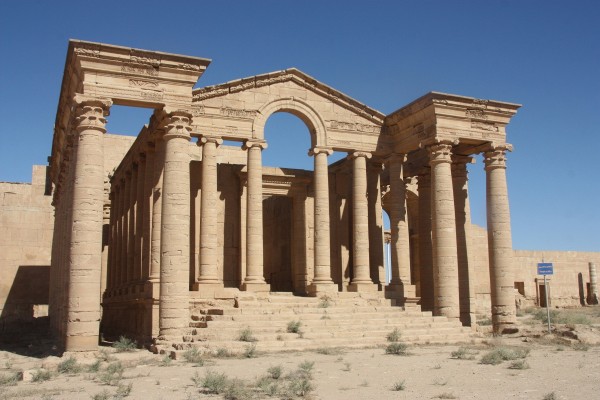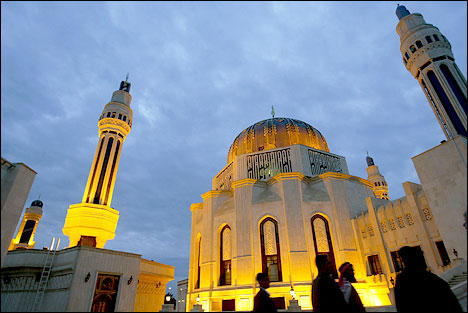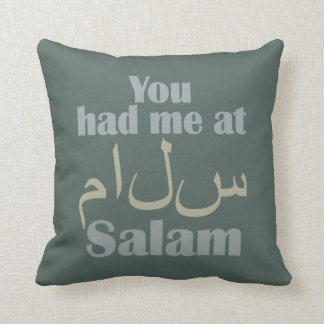Since
my children have been born (2005 and 2008), they have only known war and conflict
in Iraq. Since I was born in 1979,
I have only known Saddam Hussein’s Iraq up until my children were born. My
grandmother was ten years old when Iraq became an independent country. For a country built on the same soil as
one of the oldest civilizations in the world, Iraq as its own political entity it
isn’t as old as it seems. Yet, the people of this country have witnessed much
change over the decades: good, bad, and indifferent.
The
name al-Iraq has been in use since
the 500s AD. There are a few theories as to where this name came from, but one
of them stems from the Sumerian city of Uruk, based on the word for “city.”
Folk etymology has the word meaning “well-watered or fertile,” which probably
refers to the lands that are flooded yearly from the Tigris and Euphrates
Rivers.
Iraq
is located in the Middle East, surrounded by the countries of Turkey to the
north; Iran to the east; Kuwait and Saudi Arabia to the south; and Jordan and
Syria to the west. It also has a very small area touching the Persian Gulf. Two
of its major rivers are listed in the Bible: the Tigris and the Euphrates. A
large portion of this country is desert, and the country spends most of the
year in a hot, arid climate. Because of its desert climate, they are
susceptible to sandstorms and dust storms. And they also have a lot of desert
flora and fauna, including 8” scorpions (nope and nope). The northern region of
Iraq is mountainous and does experience snowfalls on occasion during the
winters.
Iraq
has been inhabited since roughly 65,000 BC with Neanderthal populations. It
later gave way to the Sumerians, who came up with so many things that led to
the modernity of societies that this area was soon to be known as the “Cradle
of Civilizations.” The Sumerians created the first writing system (cuneiform)
as well as developing the wheel, the 60-second minute, the 60-minute hour, the
first maps, and the first schools. They also made great strides in mathematics,
medicine, astrology, astronomy, organized religion, and written law. The
Akkadians also moved into this area and eventually the two cultures merged to a
degree. The fertile area between the Tigris and Euphrates Rivers was known as
Mesopotamia and most of the early civilizations lived in this region. Later
under the reign of Hammurabi, the Babylonian Empire took control of this area. Many
tried to take control of this area throughout the centuries, and many different
empires have had their turn at ruling this land: the Assyrians,
Neo-Babylonians, Alexander the Great, various Persian groups, the Romans, and
others. Islam was introduced to Iraq during the 7th century and
quickly became the majority religion. The city of Baghdad was built as a
capital city for the caliphate, and the Mongols came in and destroyed it. They
also couldn’t escape two terrors: The Black Death and Tamerlane, a Mongol
warlord who came in and slaughtered thousands and thousands of Assyrians. This area was later under Ottoman rule,
because who WASN’T under Ottoman rule at one point or another, right? While
under Ottoman rule, they sided with the Germans and Central Powers during WWI.
The British subsequently arrived to take over the city of Baghdad toward the
end of the war to defeat the Ottomans. After the British took over, they kind
of just never left and then appointed who they thought would make good leaders
in the area. The famous movie Lawrence of
Arabia is based on the actual person T.E. Lawrence, a British soldier who
was a liaison between the British and the Ottomans. Iraq was finally granted
independence from Britain in 1932. There were several conflicts during their
early years of independence, and in 1979, Saddam Hussein’s Ba’ath Party took
control of the government. Iraq spent much of the 1980s in a war with Iran, and
when that was done, they fought with Kuwait, in which the US got involved. I
remember watching those bright green scud missiles streaming across night
vision videos during the Gulf War. Then the US mistakenly invaded Iraq in 2003
on the false pretenses that Saddam Hussein was hiding weapons of mass
destruction. Since then, there have been many conflicts and much fighting;
although US troops withdrew in 2011, attacks from insurgency groups continue to
still plague the cities of Iraq.
Baghdad
is not only the largest city in Iraq, but it’s the second largest city in the
Arab region (after Cairo, Egypt). It also happens to be the second largest in
Western Asia (after Tehran, Iran). This capital city is located along the
Tigris River and has long been an important cultural and business capital in
this region. Although the city was pretty much decimated by the Mongols in
1258, it rebuilt itself and became the intellectual and cultural hub of the
Middle East. Because of years of recent war and continued insurgency attacks,
Baghdad has been listed as one of the least desirable cities to live in. Its
hospitality and quality of life consistently keep its ranking low. Prior to the
2003 invasion, the Baghdad Zoo used to be the largest zoo in the Middle East.
However, within a week most of the animals were either stolen (for food) or
died from starvation themselves. The National Museum of Iraq and the National
Library held thousands upon thousands of historical and prehistoric artifacts
and documents chronicling our world heritage. Many documents were destroyed at
the hands of the Saddam Hussein regime, and many of the national and world
treasures have been looted and/or destroyed over the past couple of decades. This
is the part of war that makes me sick at heart: to watch all of those pieces of
history simply go down the drain. We’ve held onto some of these artifacts for
20,000 years and destroy them in 20 years.
Iraq’s
economy is largely based on its oil reserves. Being one of the founding members
of OPEC, Iraq has around 2000 oil wells that have been drilled in the country
(compared with about 1.1 million oil wells in just Texas alone, which begs the
question of why we are messing around with other country’s oil in the first
place?). The 2003 invasion has really wrecked the Iraqi economy. Because of the
high number of people who fled the country and general problems with
infrastructure due to continued insurgency attacks, there are still many people
who are unemployed and underemployed.
Roughly
95% of the population are Muslim in Iraq, and of that population, 65% of them
are Shia with the remaining 35% as Sunni. There are a small number of
Christians who still live in Iraq, although many have fled. Most Christians in
Iraq are Roman Catholic and they are not allowed to mention or show their
religion outside of their church. At one time, there was an Iraqi Jewish
population as well, but most of them have fled the country after the beginning
of WWII.
The
most widely spoken language in Iraq is Arabic (Iraqi Arabic to be more
specific) and is the official language.
In 2004, the Iraqi government also included Kurdish as an official
language as well. Assyrian Neo-Aramaic (also referred to as Syriac) and Turkmen
are also counted as recognized regional languages. Other minority languages in Iraq include Persian, Armenian,
Mandaic, Circassian, and Shabaki.
Iraq
has some impressive firsts based on its location and history. There are so many cultural traditions
that go back to antiquity, like beekeeping (honey is very important in this region),
growing licorice and dates, and much of their music and arts. A number of
places mentioned in the Bible are thought to be in Iraq: it’s said that Abraham
was from Ur (located in southern Iraq) and his wife was from Nahor (another
city in Iraq). In fact, many legends put the famed Garden of Eden between the
Tigris and Euphrates Rivers. And although the number of invaders throughout the
centuries has influenced their culture, they incorporated those influences into
their food, language, and cultural arts. I’m very excited about cooking food
from Iraq because I’m basically making my favorite foods with an Iraqi twist.
Up
next: art and literature








No comments:
Post a Comment